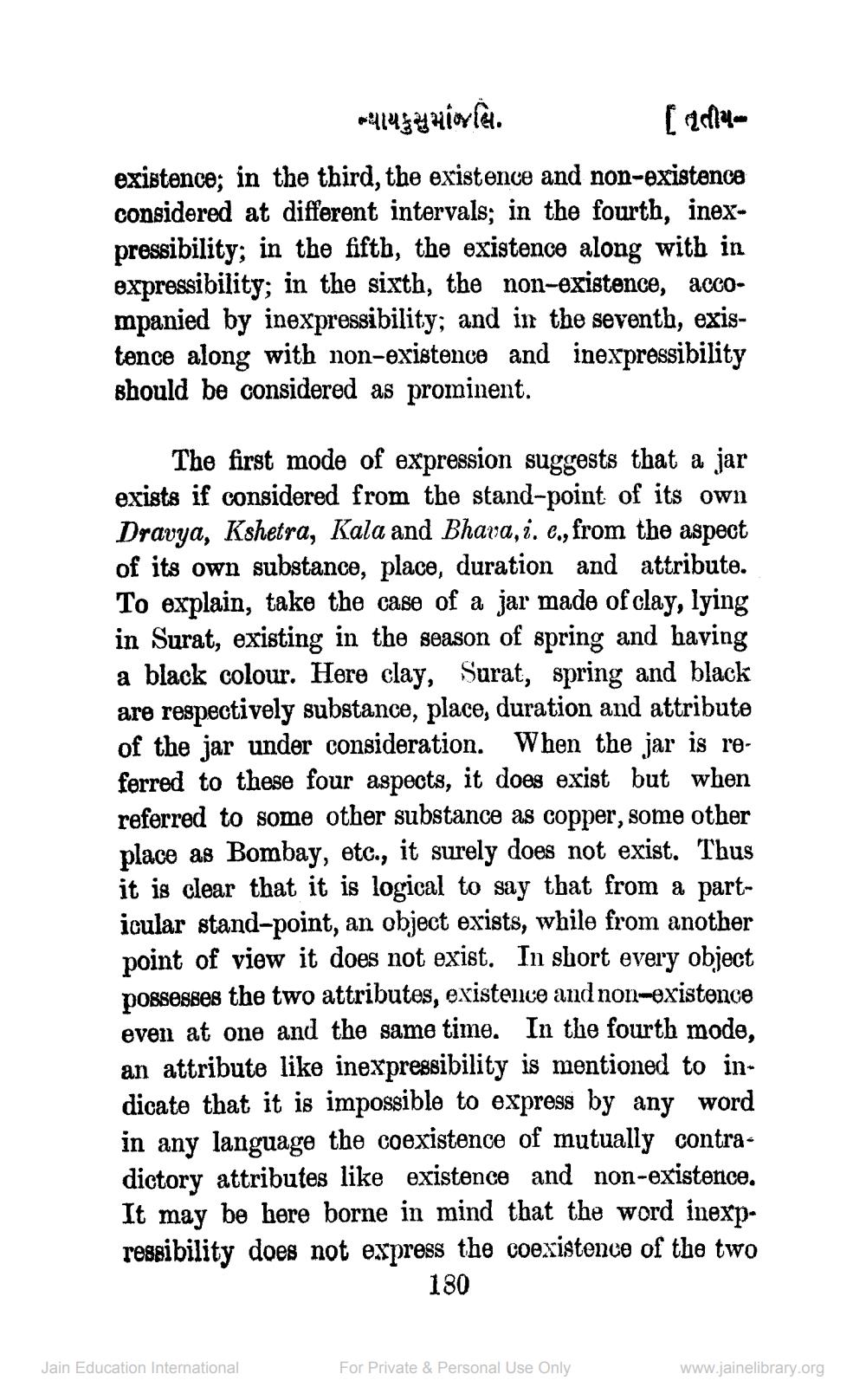________________
ન્યાયકુસુમાંજલિ.
[ 2014
existence; in the third, the existence and non-existence considered at different intervals; in the fourth, inexpressibility; in the fifth, the existence along with in expressibility; in the sixth, the non-existence, accompanied by inexpressibility; and in the seventh, existence along with non-existence and inexpressibility should be considered as prominent.
The first mode of expression suggests that a jar exists if considered from the stand-point of its own Dravya, Kshetra, Kala and Bhava,i. e., from the aspect of its own substance, place, duration and attribute. To explain, take the case of a jar made of clay, lying in Surat, existing in the season of spring and having a black colour. Here clay, Surat, spring and black are respectively substance, place, duration and attribute of the jar under consideration. When the jar is referred to these four aspects, it does exist but when referred to some other substance as copper, some other place as Bombay, etc., it surely does not exist. Thus it is clear that it is logical to say that from a particular stand-point, an object exists, while from another point of view it does not exist. In short every object possesses the two attributes, existence and non-existence even at one and the same time. In the fourth mode, an attribute like inexpressibility is mentioned to indicate that it is impossible to express by any word in any language the coexistence of mutually contradictory attributes like existence and non-existence. It may be here borne in mind that the word inexp. ressibility does not express the coexistence of the two
130
Jain Education International
For Private & Personal Use Only
www.jainelibrary.org




